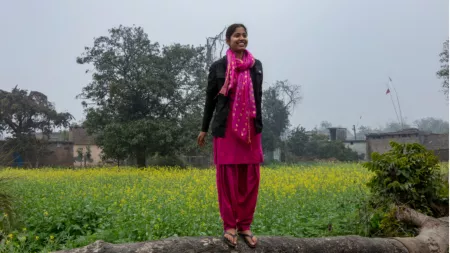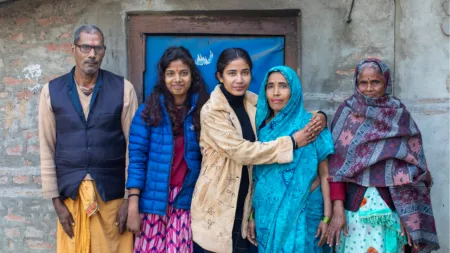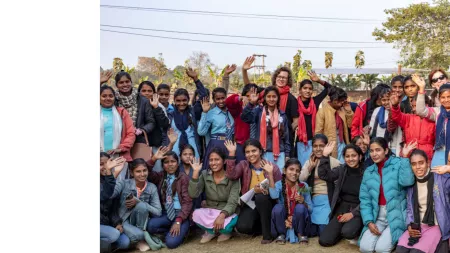“Our government has provided various opportunities to boys, however girls are deprived of such opportunities. So, it is crucial to advocate for girls’ rights. We can see that boys in our society have achieved heights through higher education. I always dream to achieve success like them in the future. I want to study and serve my community. I wish to advocate against gender discrimination and inequality in the future," says Gulsabha Banu, 21, a girls’ rights activist in Kapilvastu, Nepal and Tipping Point 2023 participant.
CARE’s decade-long Tipping Point initiative in Nepal has empowered girls in all settings to have their voices heard, using the Girls in Action model (formerly known as LCOM) to support girls in leading change. With support from CARE and WOREC Nepal, Girls’ Rights Forums (GRFs) were formed and around 3,000 Nepali girls are now members, Gulsabha included. Over 240 girl leaders are at the forefront of advocacy efforts, and in the last year, 8,159 girls and community members have been directly impacted by Tipping Point programming.
In March of 2022, adolescent girls in Nepal began challenging local government structures to secure an official budget for promoting girls’ rights. They pushed for the FY22-23 budget to include activities for girls’ agency and empowerment - and they succeeded.

What changed?
- For the first time, an official budget was specifically dedicated to adolescent girls: Through their continuous advocacy, GRFs achieved a groundbreaking win by receiving 4,600,000 rupees, approximately $35,000 USD, from the local government to be allocated across 11 Municipalities of Nepal.
- Budgets paid for girls’ access to life-changing services and trainings: The budget implemented various programs for a full fiscal year, including pad-making training, self-defense training, basic computer training, life-skill training, and funding for awareness-raising campaigns against child marriage and dowry.
- Structural change which benefitted girls: The secured funds for girls’ empowerment initiatives were not only for GRF members, but for all girls in 11 Municipalities, with the anticipated reach totaling more than 62,000 girls.
- Shifts in social norms on the role of girls: By advocating for themselves in front of the local government on various levels, girls also contributed to a shift in social norms. By speaking up for themselves, girls challenged existing gender norms and played a role in driving legislative change.

How did it happen?
- Girl-led action: The Girls in Action model encouraged girls to identify the issues they wished to address, supporting them to conduct surveys, collect data and organize events. This built their confidence in speaking out and was a first step towards shifting social norms on the role of adolescent girls.
- Building relationships with local authorities: Over the course of five years, GRFs in the Lumbini province of Nepal established strong relationships with local government authorities by inviting officials to their campaigns and rallies for girls’ rights.
- Girls being invited to the decision-making table: Through interactions with stakeholders, girls convinced their local government of the importance in empowering adolescent girls and were invited to join the authentic Nepali budget planning process.
- Ongoing mentorship: CARE Nepal and partner organization WOREC provided mentorship to the girls’ groups, which included detailed information on the government processes for setting local authority budgets.
- CARE’s decade-long involvement with girls in Nepal: Since Phase I of the Tipping Point initiative, CARE has continuously worked to center women and girls in all its programming, specifically promoting girls’ agency, relationship building, and structure reform.
What did we learn?
- Girls’ advocacy wins are wins for all: Around 10,000 people, including girls’ family members, are also reached through this win, and boys and men have also become allies in initiatives promoting girls’ rights.
- The power of girl-led change: This advocacy win demonstrated that when girls are equipped with the tools and knowledge to lead change, they can create real and positive outcomes in their communities.
